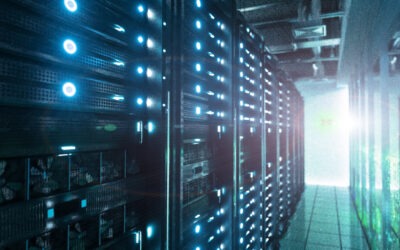Energy price hikes have hit the data centre industry hard. While a lot of investment has gone into energy efficiency, there’s no escaping the core requirement of a data centre: to power the servers. But how can they do this in a way that best serves the customer, both on performance and value?
Cost increases too big to absorb
First up, the bad news: prices are high and could still get higher. The government’s Energy Bill Relief Scheme for businesses will help, but won’t solve the problem altogether – particularly as it has been established as a 6-month scheme, and no one can predict what will happen after March 2023.
In all, the UK market has seen energy prices rise by 600% since January 2021. That’s not the kind of cost that any business can swallow – which is why we’re seeing price increases across the board. Data centres, likewise, have little choice but to pass on their cost increases to their customers, or risk going out of business.
How do data centre energy contracts work?
Data centres have typically negotiated their energy contracts on the basis of a 2-3-year fixed rate, or even longer. This ensures that everyone knows what their outgoings will be for the duration of that period – both the data centre, and the customers. However, in a market that’s changing as quickly as this one, it’s not easy to find those long-term agreements anymore, and even when you can find a fixed rate, it’s hard to be sure it’s offering optimum value. After all, just as with home energy contracts, you don’t want to find yourself fixed at the highest rate if the market disruption resolves itself sooner than expected.
Instead, data centres are looking at Futures and day-ahead markets to get the best possible rates. While it’s a more complicated way of buying electricity, in these volatile markets it can generate significant cost savings compared to fixed-term contracts – savings that data centres can share with their customers. Of course, as with any variable contract, there is always the risk of higher prices if costs continue to climb. But, keeping an eye on these markets will also alert data centres to changing market conditions, so that if prices begin to settle and lower, they will be able to get back into a fixed-rate contract that makes sense.
How can data centres protect their customers from price volatility?
Despite price hikes, data centres continue to offer an economy of scale that surpasses what the majority of organisations could achieve in an on-premises server room. But don’t be satisfied with that alone. Your data centre should also be working on other ways to keep your costs as low as possible; for example, by passing on energy price rises at-cost, and at the minimum level the data centre can manage, rather than taking the opportunity to add profit. Here are some other ways your data centre should support you:
1. Helping you budget
Knowing your costs up front and being able to plan accordingly is so important. Despite the current turbulence, your data centre should still be offering you a set price for energy each month, and keeping you well informed of any changes.
2. Being transparent
If your data centre hasn’t yet increased their energy prices, find out when their existing energy contract ends so that you can prepare for new pricing. Unfortunately, price rises are inevitable.
3. Supporting your efficiency goals
Talk to your data centre to see if there are ways you could run your IT more efficiently, to limit the impact of price rises. They are the experts in IT and energy efficiency, and will be able to support you with incremental changes that could make a real difference to your bills.
Finding efficiencies
As your service provider, your data centre should be working with you to help plan for price increases and mitigate them where possible. As a customer, that’s the least you should expect.
For those organisations not in data centres, but facing your own rising energy costs, it is worth investigating whether you could save money by moving your IT infrastructure offsite. Despite the price hikes, data centres offer greater cost- and energy efficiency than you can expect to achieve in an on-premises server room. And, in addition to cost savings, you also get the benefits of greater performance, higher reliability, and the partnership that working with a data centre brings – all of which could net you financial gains that will help you face the energy crisis with greater resilience.
If you’re interested to work with a data centre that has won awards for energy-efficiency, get in touch to explore your options with one of our experts.

